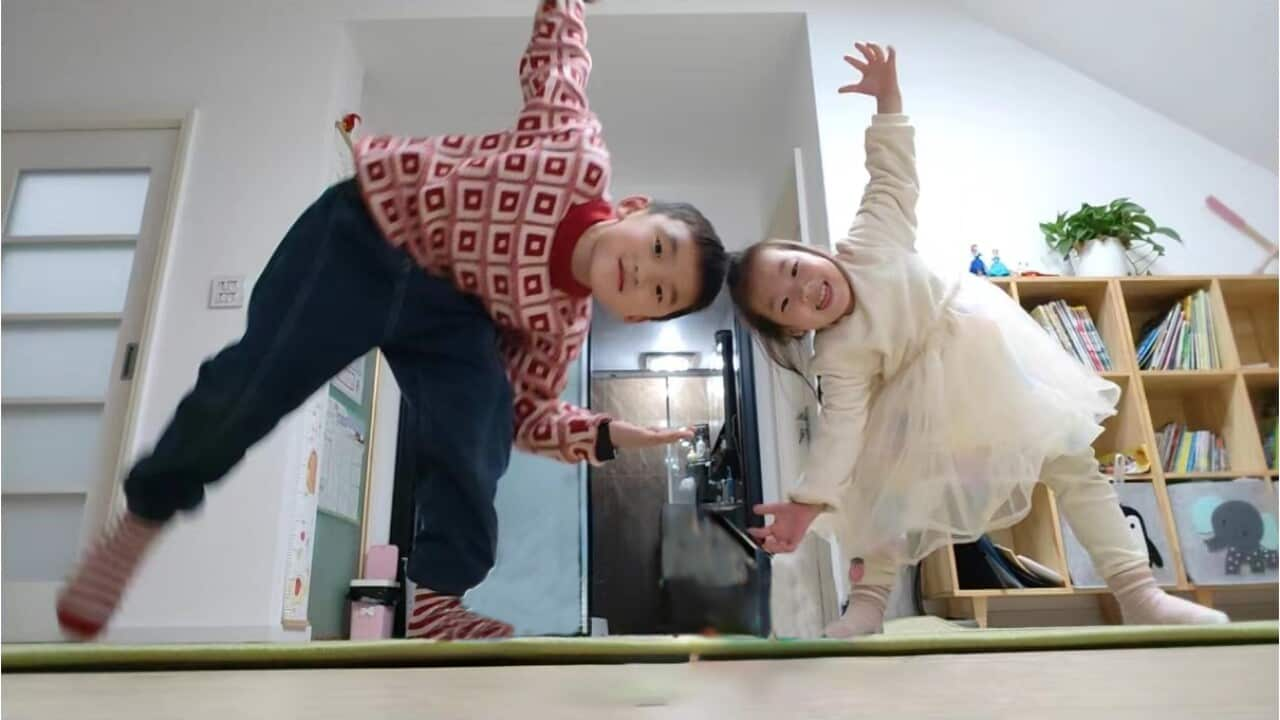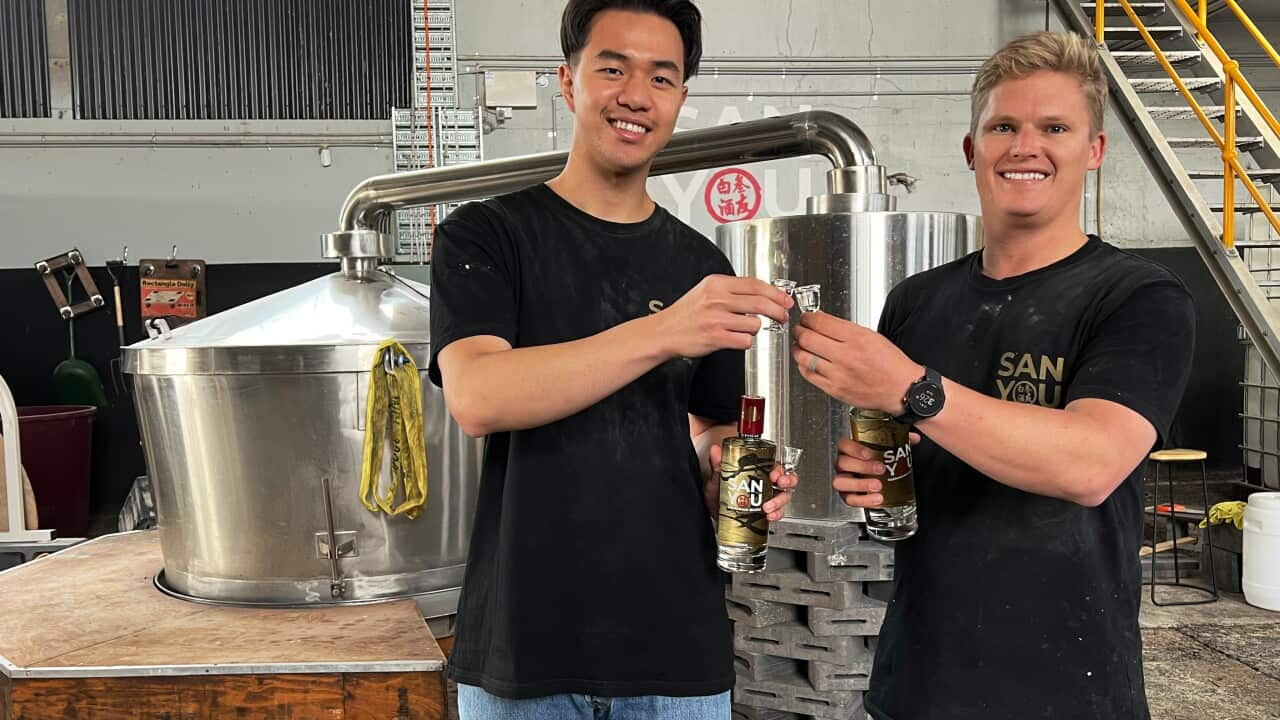Key Points
- Australia is no longer a government-approved group tourism destination for Chinese tourists.
- Home Affairs data shows over 25 per cent visitor visa applications from Chinese nationals were rejected in June.
- ABS data shows Chinese tourist numbers in April recovered by 33 per cent as compared to 2019.
Last weekend, a giant chubby kangaroo caught the eye of the crowd on a large 3D billboard in downtown Chengdu, the capital of China's Sichuan province, known for its pandas and hot pots.
This is the first time Tourism Australia's 'Come and Say G’day' global ad campaign featuring its new mascot Ruby, the kangaroo, made a landing in China.
The campaign was launched in Australia last October.
Will the $125 million global ad campaign pay off in China as expected?
Tourism Australia’s managing director Phillipa Harrison, who attended the campaign's launch in Chengdu, says Ruby has been a success in other key tourism markets around the world.
Fifty-nine per cent of those who have viewed the campaign say it has made them more likely to take a holiday to Australia.Phillipa Harrison, MD, Tourism Australia
"Given this success, we are confident Ruby will be very popular in China as well," she was quoted as saying in a media release.
Seen hopping across all platforms of Chinese media, this tourism campaign has received over 20 million views in a single day on Weibo alone, one of China's largest social media platforms.
The tagline of the campaign has been converted into a hashtag in Mandarin for Chinese social media.

The campaign used the Mandarin version of 'Come And Say G’Day' as a hashtag on Weibo and got over 20 million views in a day. Credit: Weibo
Data provided by the Department of Home Affairs shows a significant decline in visa approval rates between 2021 and this year.
Between October and December 2021, the approval rate of visitor visa applications from Chinese nationals had gone up to 95 per cent, whereas nearly one in four (or 24.5 per cent) were rejected between 1-23 June this year.
One Chinese social media user wrote, "I was excited to read the Australian tourism information, but since my visa application was rejected, I get upset when I see these messages again."
"I've heard the rejection rate is high, and I don't dare let my family apply," wrote another.
A spokesperson from Home Affairs argued what may have led to this decline.
“Many of the visa applications finalised in this period [ 1-23 June] were older visa applications from the visitor visa backlog and an applicant’s personal circumstances may have changed since their application was submitted,” a spokesperson from Home Affairs tells SBS Chinese.

'Come and Say G’day' is a $125 million global campaign running across Tourism Australia’s 15 key markets. Credit: Tourism Australia
She tells SBS Chinese that the campaign video brought back a lot of memories for her and made her want to travel back to Australia at some point in time.
But her observation came with a caveat.
"Most of my friends who shared this video or liked it, were international students who had been to Australia. It might be difficult to attract first-time tourists" she says.

Former international student Krystal Gui says the campaign video may not appeal to potential first-time visitors to Australia. Credit: Supplied
Off China's bucket list for now
SBS Chinese understands that under the Chinese government's Approved Destination Status (ADS) scheme, there have been no group tours from mainland China so far this year.
It was reported in Chinese media that China had resumed group tours to 40 other countries from March 15, taking the number of approved destinations to 60 after reopening its international borders earlier this year.
But Australia still remains excluded from that ADS list.
Jun Wen, a lecturer in Tourism and Service Marketing at Edith Cowan University in Western Australia, believes that the restoration of group tours is "a prerequisite" to warming up the Chinese tourist market.
"It is difficult to impact tourists' behaviour or decisions with just a promotional video," he says, referring to the Australian tourism ad campaign.
Until Australia becomes an approved group tourism country by the Chinese government, it will be difficult for the Australian tourism market in China to recover any time soon.Dr Jun Wen
However, Christine Zhang, the owner of Great Wall Travel Services in Melbourne, thinks differently.
She tells SBS Chinese that although ADS tours are key to the growth of Australia's tourism industry, they are becoming less attractive for Chinese tourists.
She adds that for Australia, the interest amongst Chinese travellers is declining in general.

Travel agency owner Christine Zhang says that even if group tours to Australia get approved by the Chinese government, the country has become less attractive for Chinese tourists. Credit: Supplied
"Even if it [ADS tour] is restored, it is unlikely to be on the same scale as before."
Now the cost of living in Australia has skyrocketed and lost its appeal for Chinese tourists.Christine Zhang, Travel agent
The latest data from the Australian Bureau of Statistics shows the number of Chinese tourists visiting Australia recovered by nearly 33 per cent (32,000) in April compared with the same month in 2019.
The number of tourists from China ranked fifth amongst all visitors to Australia in April after New Zealand, the US, the UK and India.

China ranked fifth in terms of short-term visitor departures to Australia in April. Credit: ABS
Obstacles to wooing Chinese tourists
A recovering airline capacity and the changing travel behaviour of Chinese tourists are amongst the obstacles Mr Wen sees in restoring the Chinese market.
Airline seating capacity from China returns to 54 per cent in June, or 70 flights per week, which is up from 42 per cent in May.
But it is still low compared to 2019, when there were an average of 158 flights per week, for a total of 2.2 million seats per year.

China was Australia's leading visitor market in 2019. Source: AAP
“For example, if a Chinese tourist wants to go to Perth, he needs to transfer to Sydney or Melbourne first, and then transfer to Perth, which is very tedious," he says.
On top of that, Mr Wen says that the travel habits and economic power of Chinese tourists have also been hugely affected by the pandemic.
“As I understand, many Chinese tourists will choose to go to some relatively closer countries for short-term travel, such as Thailand [over faraway places like Australia],” he adds.
Local market not ready
With Chinese tourists gradually returning to Australian shores since international travel resumed for them earlier this year, Australia's trade and tourism minister Don Farrell says “it’s the perfect time to invite Chinese travellers to come and say G’Day”.
Cahyo Candrawan, a shopkeeper in a souvenir shop in Melbourne, eagerly organises shelves and awaits the return of Chinese tourists.
“We can see many Chinese tourists coming to Melbourne … and they are pretty generous as well to get some merchandise or gifts from Australia, especially from Melbourne,” he tells SBS Chinese.
China was Australia’s leading tourist market in 2019 when 1.4 million of its people visited, contributing $12.4 billion to visitor spending.

Cahyo Candrawan is a shopkeeper in a Melbourne merchandise store who is awaiting the return of Chinese tourists. Source: SBS / Nicole Gong
He cites Perth as an example where some local restaurants are only open half the week due to reduced demand and staff shortages.
He says it's "hardly a positive experience" for Chinese tourists.
“In China, you can order takeaway even in the early hours of the morning, which is a very big difference [from Australia],” he says.
He agrees that while it is good to make efforts to revive the Chinese market, local issues also need to be addressed to achieve Tourism Australia's goal.
“Even though the Australian government and tourism industry are making efforts to welcome Chinese tourists, are the local tourism facilities, products or services ready,” he questions.





